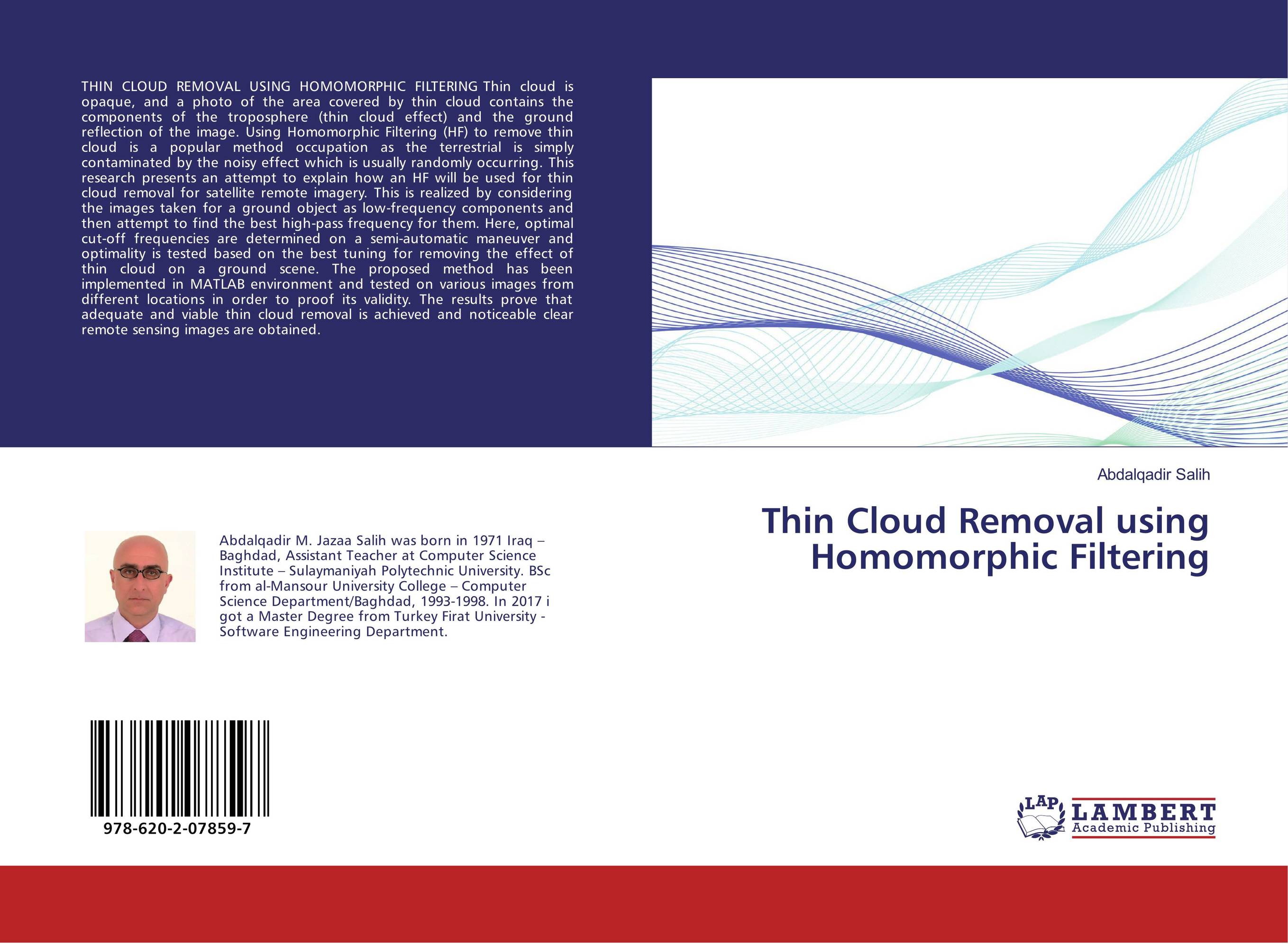| Поиск по каталогу |
|
(строгое соответствие)
|
- Профессиональная
- Научно-популярная
- Художественная
- Публицистика
- Детская
- Искусство
- Хобби, семья, дом
- Спорт
- Путеводители
- Блокноты, тетради, открытки
Thin Cloud Removal using Homomorphic Filtering.

В наличии
| Местонахождение: Алматы | Состояние экземпляра: новый |

Бумажная
версия
версия
Автор: Abdalqadir Salih
ISBN: 9786202078597
Год издания: 2017
Формат книги: 60×90/16 (145×215 мм)
Количество страниц: 60
Издательство: LAP LAMBERT Academic Publishing
Цена: 22868 тг
Положить в корзину
Позиции в рубрикаторе
Отрасли знаний:Код товара: 182025
| Способы доставки в город Алматы * комплектация (срок до отгрузки) не более 2 рабочих дней |
| Самовывоз из города Алматы (пункты самовывоза партнёра CDEK) |
| Курьерская доставка CDEK из города Москва |
| Доставка Почтой России из города Москва |
Аннотация: THIN CLOUD REMOVAL USING HOMOMORPHIC FILTERING Thin cloud is opaque, and a photo of the area covered by thin cloud contains the components of the troposphere (thin cloud effect) and the ground reflection of the image. Using Homomorphic Filtering (HF) to remove thin cloud is a popular method occupation as the terrestrial is simply contaminated by the noisy effect which is usually randomly occurring. This research presents an attempt to explain how an HF will be used for thin cloud removal for satellite remote imagery. This is realized by considering the images taken for a ground object as low-frequency components and then attempt to find the best high-pass frequency for them. Here, optimal cut-off frequencies are determined on a semi-automatic maneuver and optimality is tested based on the best tuning for removing the effect of thin cloud on a ground scene. The proposed method has been implemented in MATLAB environment and tested on various images from different locations in order to proof its validity. The results prove that adequate and viable thin cloud removal is achieved and noticeable clear remote sensing images are obtained.
Ключевые слова: image processing, Thin Cloud Removal using Homomorphic Filtering



